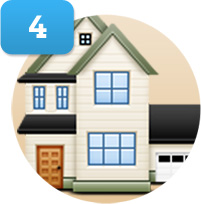Texas homeowners may soon have more trouble suing their homeowners insurance company for unpaid claims, especially over weather-related damage, thanks to a new Senate bill.
The bill, which was introduced by Senator Larry Taylor, has garnered a great deal of support from homeowners insurance companies throughout Texas, although it’s been opposed by consumer groups and trial lawyers. Groups opposing the measure say it would take away the rights of property owners.
Senate Bill 1628 would make sweeping changes to how businesses and homeowners can sue insurance companies that do not treat them fairly or do not pay out enough for homeowners insurance and casualty insurance claims. The bill would impose a two-year time limit for policy holders to seek claims.
Before being allowed to sue for unfair claims handling or deceptive practices, policyholders would be required to provide advance notice, sign a statement swearing that damages occurred, and provide proof of the damages. Policy holders would also be required to indicate an amount they would accept in settlement. The purpose of this is allowing insurance companies the chance to settlement legitimate claims after conducting a review. The lawsuit would offer some protection to insurance adjusters and agents while lowering the penalty Texas homeowners insurance face when they are caught delaying or denying claims that are legitimate.
There is one thing that both sides agree on: the number of homeowners insurance lawsuits over wind and hail damage to Texas homes has grown tremendously in recent years. Most of these lawsuits have been made by homeowners who suffered damage following Hurricane Ike hitting the Texas coast in 2008, as well as those who were affected by massive hailstorms.
Texas has more weather-related events than any other state in the country, and hail-related damages are estimated to have cost Texas a whopping $10.5 billion between 2004 and 2013.
According to proponents of the bill, these lawsuits are increasing homeowners insurance premiums in Texas for millions of homeowners.
Litigation rates on hail and wind damage claims have hit up to 30% for some Texas homeowners insurance companies, and about 80% of those lawsuits were filed after the initial claim was paid by the adjuster. Very few consumer complaints have been filed, however.
According to Taylor, the litigation is not consumer-generated. Instead, he claims that lawyers and roofers are making phone solicitations and turning to radio and television ads and door-to-door solicitation to find people willing to sue their insurance company. Immediately after a hail storm, lawyers go through affected areas and do what they can to create disputes, including promising Texans new “free” roofs and easy money if they agree to sue their homeowners insurance company. Homeowners insurance companies, meanwhile, usually pay out more than necessary to avoid costly litigation.
Forty-two Texas counties currently have ongoing hail damage litigation, with 300 lawsuits filed in 25 counties between April 15 and April 23, 2015 alone. Proponents of the bill say that real damages of just a few thousand dollars have been producing claims of more than $100,000. Meanwhile, plaintiffs’ attorneys have brought in more than $800 million in attorney’s fees from homeowners insurance lawsuits.
A report published last year found that 5,740 lawsuits were filed in Hidalgo County after two large hail storms in 2012. In April 2013, the number had swelled to 11,000. At least 10,000 people have now lost their homeowners insurance in Hidalgo County, and three major Texas homeowners insurance carriers have stopped offering coverage in the area.
At a recent hearing on this new bill, a housing advocate said that insurance premiums have increased by more than 100% for some households from $500 a year to over $1,200.
Industry representatives say that an estimated $250 million in hail and wind damage to roofs in McAllen, Texas increased to nearly $600 million due to lawsuits.
One example that highlights just how quickly homeowners insurance claims become inflated after an attorney gets involved comes from Mission, Texas, which experienced minimal hail in the 2012 storms. The insurance adjuster’s estimate of damage in one case was about $7,000. After the claim was paid by the insurance provider, the policy holder hired a trial lawyer. The lawsuit was eventually settled in 2014 for an extra $194,000, but no repairs have ever been made to the home. The insurance company in this example is one of three that has since pulled out of the market.
Critics have been quick to say that Taylor should not be carrying the bill as he owns an insurance agency called Taylor Truman Insurance Agency in southeast Texas. Taylor argues that he’s fighting on behalf of consumers by attempting to lower homeowners insurance rates.
Taylor did soften several provisions of the bill that had sparked complaints. The proposed legislation does preserve a homeowner’s right to sue their insurance company and collect an 18% penalty along with pre-judgment interest and attorneys’ fees if the homeowners insurance provider acted wrongly.
Texas already has the third-highest homeowners insurance rates in the United States, largely due to hailstorms, tornadoes, hurricanes, and other weather-related issues. While Texas will always have some of the highest insurance rates in the country because of its location, a bill that limits litigation may just help to lower insurance rates for homeowners across the state, who are now paying more to cover these costs.





